Acknowledgments
The following horticulturists generously shared their time, cactus collections, gardens, advice, and expertise with me: Dan Johnson, Dave Ferguson, Donald Barnett Jr. and Sr., Gene Joseph, Jane Evans, Jon Weeks, Kelly Grummons, Lauren Springer Ogden, Mark Sitter, Miles Anderson, Panayoti Kelaidis, Scott Ogden, Sean Hogan, Steve Plath, and Tony Avent. I would like to particularly thank Matt Johnson, David Salman, and Greg Starr, who reviewed the manuscript and improved the finished product.
Bibliography
Anderson, Edward F. 2001. The Cactus Family. Portland, Oregon: Timber Press.
Anderson, Miles. 2008. The Complete Illustrated Guide to Growing Cactus and Succulents. London, England: Lorenz Books.
Blum, W., M. Lange, W. Rischer, and J. Rutow. 1998. Echinocereus. Fa. Proost N.V., Turnhout, Belgium.
Bowers, Rick, Nora Bowers, and Stan Tekiela. 2009. Cactus of Texas Field Guide. Cambridge, Minnesota: Adventure Publications.
Ingram, Stephen. 2008. Cacti, Agaves, and Yuccas of California and Nevada. Los Olivos, California: Cachuma Press.
Johnson, Matthew Brian. 2004. Cacti, other Succulents and Unusual Xerophytes of Southern Arizona. Tucson, Arizona: University of Arizona Press.
Kelaidis, Gwen M. 2007. Hardy Succulents. North Adams, Massachusetts: Storey Publishing.
Konings, Ad, and Gertrude Konings. 2009. Cacti of Texas in their Natural Habitat. El Paso, Texas: Cichlid Press.
Loflin, Brian, and Shirley Loflin. 2009. Texas Cacti. College Station, Texas: Texas A & M University Press.
Mielke, Judy. 1993. Native Plants for Southwest Landscapes. Austin, Texas: University of Texas Press.
Niethammer, Carolyn. 2004. The Prickly Pear Cookbook. Tucson: Rio Nuevo Publishers.
Phillips, Steven J., and Patricia W. Comus. 2000. A Natural History of the Sonoran Desert. Tucson: Arizona-Sonora Desert Museum Press; Berkeley: University of California Press.
Pilbeam, John. 1999. Mammillaria. Southampton, U.K.: Cirio Publishing Services Ltd.
Pilbeam, John, and Derek Bowdery, 2005. Ferocactus. Norwich, U.K.: British Cactus and Succulent Society.
Preston-Mafham, Ken. 2007. 500 Cacti. Richmond Hill, Ontario, Canada: Firefly Books Ltd. Publishing.
Preston-Mafham, Ken, and Rod Preston-Mafham. 1991. Cacti: The Illustrated Dictionary. Portland, Oregon: Timber Press.
Starr, Greg. 2009. Cool Plants for Hot Gardens. Tucson: Rio Nuevo Publishers.
Turner, Raymond M., Janice E. Bowers, Tony L. Burgess. 1995. Sonoran Desert Plants: An Ecological Atlas. Tucson: The University of Arizona Press.
About the Author

Scott Calhoun is an award-winning author and garden designer based in Tucson, Arizona. Self-reliant prickly plants, and particularly cactus, have long captured his imagination. In his design practice, he incorporates cactus into every residential space and sees them as the plant family of the futureespecially in arid parts of the world.
Scott is the author of six gardening books. His first book, Yard Full of Sun, was awarded the 2006 American Horticultural Society Book Award; his second title, Chasing Wildflowers, won the Garden Writers Association 2008 Silver Book Award. Scott writes a monthly garden column for Sunset magazine and has written for most national gardening magazines. He runs Zona Gardens, a design studio, and gardens, writes, and lectures across the United States. When he is at home, he can often be found in his garden, a magenta glass of prickly pear lemonade in hand and his schnoodle, Macy, at foot. Catch up with Scott at www.zonagardens.com.
Planting and Care
 In terms of watering, pruning, and other sorts of plant maintenance, cactus are undoubtedly among the least-demanding group of plants on the planet. That said, like all plants, they require the least care when situated in an environment that mimics their natural habitat as much as possible. Once these conditions are provided, and the plants are established, cactus can be left on their own for weeks, or even months at a time with little or no care. Their reputation as tough plants is well deserved, but they are especially low maintenance if they are kept in robust health by paying attention to the following care tips.
In terms of watering, pruning, and other sorts of plant maintenance, cactus are undoubtedly among the least-demanding group of plants on the planet. That said, like all plants, they require the least care when situated in an environment that mimics their natural habitat as much as possible. Once these conditions are provided, and the plants are established, cactus can be left on their own for weeks, or even months at a time with little or no care. Their reputation as tough plants is well deserved, but they are especially low maintenance if they are kept in robust health by paying attention to the following care tips.
Sun exposure
When we think of cactus, we probably imagine them stoically withstanding the full brunt of a relentless desert sun from dawn to dusk. And while it is true that most cactus appreciate full strong sunlight, in the Southwest and South, many cactus species enjoy some amount of shade on summer afternoons and when high temperatures exceed the century mark. In general, in the more northern parts of the country, cactus need all the sunlight you can provide, but in the hottest and driest climates, shading some species of cactus for a portion of the day is desirable.
Which species are likely to need some shade? Take a look at the plant: the more densely a species is covered with white reflective spines, the better equipped it is to withstand full sun. The more green flesh that is visible, the more likely it is to enjoy some amount of shade in hot sunny climates. If you see the flesh of your plant yellowing, this can be a sign of sun stress. Provide an adequate amount of shade and the yellow flesh will recover and re-green. If the flesh has gone from yellow to white, that flesh is dead and will not recover.
There are a few facts to remember. If you grow your plants under commercial shade cloth, you can produce a cactus with a normal appearance in up to 50 percent shade. Beyond 70 percent, the plant will lose its normal character. It may turn a darker color, or elongate to try to maximize its exposure to sunlight and ability to photosynthesize. Most commercial cactus nurseries grow cactus under some percentage of shade to speed their growth. These plants will need to be acclimated to full sun, which we will discuss.
If you grow potted cactus incompatible with your regions winters, you can move them indoors for the cold months. If you dont have a green-house or conservatory, a brightly sunlit room that stays above freezing will suit them well. Cactus aficionados in Colorado have been successful at wintering cactus in rooms whose winter temperatures hover between 40 and 50 F (410 C). In a room this cool, little or no watering is needed until the plants are moved outdoors after the last frost. Although a south-facing windowsill has overwintered many a cactus collection, plants generally do better with more sun than can be provided indoors. The amount of light for cactus to truly thrive indoors year-around would seriously fade upholstery on furniture. Although cactus can be grown indoors, they often fail to thrive as indoor plants unless they are moved outdoors during the warm months when they are actively growing.
CAM IDLING
 Cactus are hardwired with a water-efficient method of photosynthesis called CAM, which is an acronym for Crassulacean Acid Metabolism, but dont let that long name turn you off. CAM metabolism is just a fancy way of saying that the plant breathes at night rather than in the day. Over 90 percent of the worlds plants photo-synthesize and transpire (lose water through their leaves) during the day, so cactus and CAM plants are unusual in this regard. CAM plants keep their stomates (holes that exchange gas and water) closed in the day and open them during the nighttime when temperatures are lower and humidity is higher. Because of this adaptation cactus lose about one-tenth as much water as plants that photosynthesize in the standard way.
Cactus are hardwired with a water-efficient method of photosynthesis called CAM, which is an acronym for Crassulacean Acid Metabolism, but dont let that long name turn you off. CAM metabolism is just a fancy way of saying that the plant breathes at night rather than in the day. Over 90 percent of the worlds plants photo-synthesize and transpire (lose water through their leaves) during the day, so cactus and CAM plants are unusual in this regard. CAM plants keep their stomates (holes that exchange gas and water) closed in the day and open them during the nighttime when temperatures are lower and humidity is higher. Because of this adaptation cactus lose about one-tenth as much water as plants that photosynthesize in the standard way.




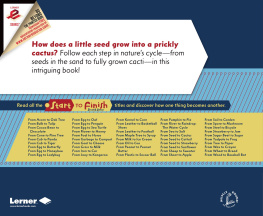
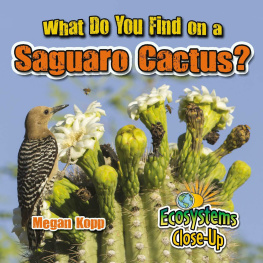
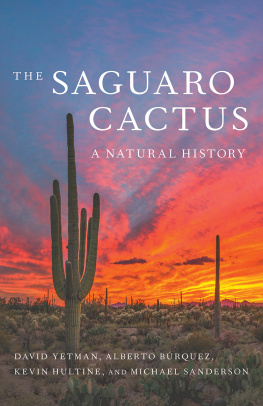
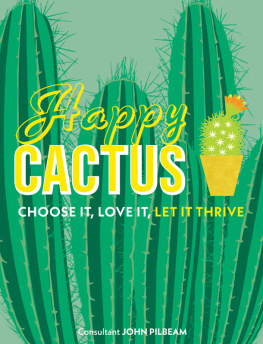
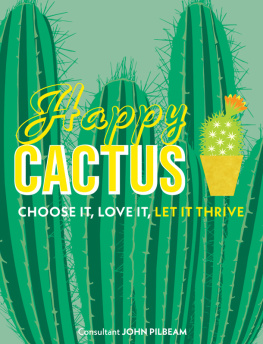

 In terms of watering, pruning, and other sorts of plant maintenance, cactus are undoubtedly among the least-demanding group of plants on the planet. That said, like all plants, they require the least care when situated in an environment that mimics their natural habitat as much as possible. Once these conditions are provided, and the plants are established, cactus can be left on their own for weeks, or even months at a time with little or no care. Their reputation as tough plants is well deserved, but they are especially low maintenance if they are kept in robust health by paying attention to the following care tips.
In terms of watering, pruning, and other sorts of plant maintenance, cactus are undoubtedly among the least-demanding group of plants on the planet. That said, like all plants, they require the least care when situated in an environment that mimics their natural habitat as much as possible. Once these conditions are provided, and the plants are established, cactus can be left on their own for weeks, or even months at a time with little or no care. Their reputation as tough plants is well deserved, but they are especially low maintenance if they are kept in robust health by paying attention to the following care tips. Cactus are hardwired with a water-efficient method of photosynthesis called CAM, which is an acronym for Crassulacean Acid Metabolism, but dont let that long name turn you off. CAM metabolism is just a fancy way of saying that the plant breathes at night rather than in the day. Over 90 percent of the worlds plants photo-synthesize and transpire (lose water through their leaves) during the day, so cactus and CAM plants are unusual in this regard. CAM plants keep their stomates (holes that exchange gas and water) closed in the day and open them during the nighttime when temperatures are lower and humidity is higher. Because of this adaptation cactus lose about one-tenth as much water as plants that photosynthesize in the standard way.
Cactus are hardwired with a water-efficient method of photosynthesis called CAM, which is an acronym for Crassulacean Acid Metabolism, but dont let that long name turn you off. CAM metabolism is just a fancy way of saying that the plant breathes at night rather than in the day. Over 90 percent of the worlds plants photo-synthesize and transpire (lose water through their leaves) during the day, so cactus and CAM plants are unusual in this regard. CAM plants keep their stomates (holes that exchange gas and water) closed in the day and open them during the nighttime when temperatures are lower and humidity is higher. Because of this adaptation cactus lose about one-tenth as much water as plants that photosynthesize in the standard way.